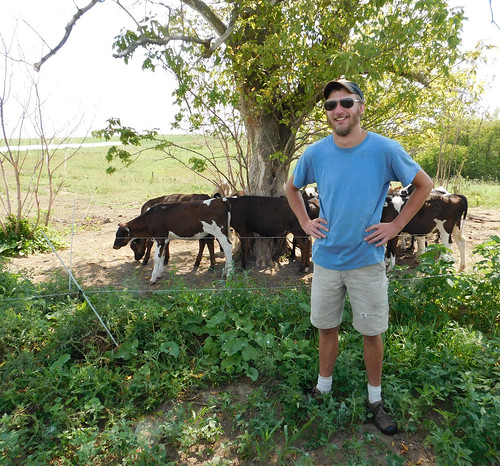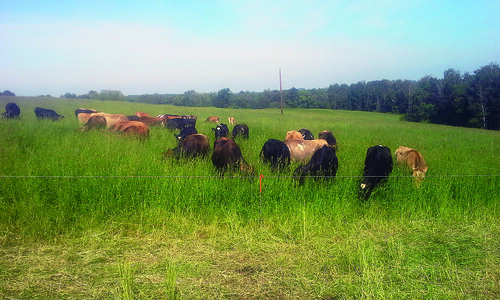
Reed Fitton grazes cattle on the same hilltop farm where the late conservationist Ben Logan grew up and later featured in his memoir, “The Land Remembers.” Fitton carefully manages the farm near Gays Mills, Wisconsin with a broad conservation ethic, preventing soil erosion and protecting waterways. He has also transformed the Ben Logan’s “Seldom Seen Farm” into an oasis for honey bees and other pollinators.
When USDA’s Natural Resources Conservation Service (NRCS) launched a new coordinated effort to improve honey bee habitat in 2014, Fitton was one of the first to participate. He works closely with NRCS to make improvements to the land that provide better forage for his cattle, improve existing hayfields and convert former corn fields into healthy pasture.
Fitton knows June to September is a critical time for bees to forage and store food for winter. This is especially true in Michigan, Minnesota, Montana, North Dakota, South Dakota and Wisconsin, which together are home to about 70 percent of the commercially managed honey bees in the United States.
To attract honey bees and other pollinators, an area must have adequate sources of food, shelter and nesting sites. A variety of wildflowers and grasses – like the ones in Fitton’s pastures – provide pollinators with food.
Protecting clover blossoms enhances pollinator habitat and cattle, so Fitton prevents his livestock from grazing the plants below four inches in height.
“I’ve found letting the pasture go a little longer has been helpful for the pollinators and minimizes bloat in my herd because the lush clover has time to ripen up,” Fitton said. “Leaving the plants growing higher than the minimum required really seemed to help in reference to the number of pollinators I see around.”
And what he’s doing works. “Due to my conservation efforts and through technical and financial assistance provided by NRCS, I’ve seen more pollinators this year than I ever have before.”
Fitton and his partner, Amanda Rubasch, have six active beehives. “Our beehives look healthy, I’ve got more bees and pollinators around, and honey production is up. There are bees all over the place now, which is rewarding to see,” Fitton said.
Karyl Fritsche, NRCS District Conservationist, worked with Fitton to develop and implement a conservation plan and plant seed mixes to help him reach his goals.
“Reed has been very proactive both in communicating his long-term goals and taking into consideration the effects on the ecosystem around him. That made integrating the prescribed grazing a great fit for this pollinator effort,” Fritsche said.
Fritsche said she hopes more private landowners like Fitton, take advantage of technical and financial assistance available from NRCS. This year, the agency is making available $4 million to landowners in Michigan, Minnesota, Montana, North Dakota, South Dakota and Wisconsin to make bee-friendly conservation improvements to their land, such as planting cover crops, wildflowers or native grasses and improving management of grazing lands. Landowners interested in participating should contact their local USDA service center to learn more.
Learn more about NRCS’ efforts to help honey bees and other pollinators. For more on technical and financial assistance available through conservation programs, visit www.nrcs.usda.gov/GetStarted.



